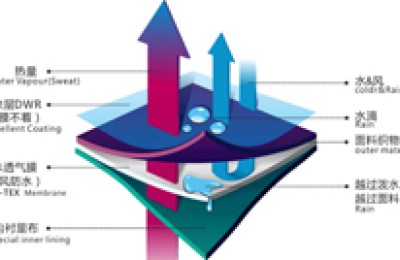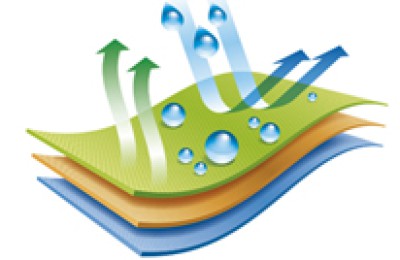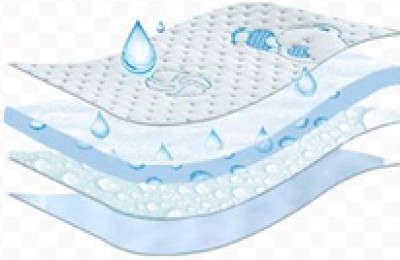In the context of the slow recovery of the global economy, many domestic textile and garment companies have adjusted their strategies and begun to “go global.” Some companies have already achieved initial results, and some are eager to try. However, judging from the current situation, most of the typical companies entering overseas markets are large enterprises with a long history, strong funds and complete industrial chains. Recently, the Thailand Industrial Park Management Committee proposed a plan to establish a special small and medium-sized enterprise industrial park, which has created an “east wind” for small and medium-sized enterprises in Yunnan, my country, to enter the Southeast Asian market.
The textile and garment industry is Thailand’s largest manufacturing industry, covering all aspects of the entire industry chain from fiber to garment production. Yunnan Province has convenient transportation conditions. Small and medium-sized enterprises can make full use of its “geographical” advantages to save money at the source. Logistics costs. To this end, the reporter interviewed Zhao Shulan, an associate researcher at the Yunnan Academy of Social Sciences, to provide reference for small and medium-sized textile and garment companies in Yunnan Province that are about to enter the Thai Industrial Park.
Reporter: You think Thailand’s construction of small and medium-sized enterprise parks is a good opportunity for Yunnan’s small and medium-sized textile and garment enterprises that have geographical advantages. What is the specific situation of Thailand Industrial Park? What do you think its favorable conditions include?
Zhao Shulan: According to current understanding, Thailand Industrial Park SME Industrial Park will be divided into manufacturing, high-tech industry, agriculture and agricultural processing industry, creative economy, foreign trade, service industry, tourism, entertainment industry, retail and wholesale industry, etc. 23 fields.
The favorable conditions for Yunnan small and medium-sized enterprises to enter Thai industrial parks include the following points: First, logistics costs will gradually decrease. At present, the Houay Xai Bridge on the Lao-Thailand border on the Kunming-Bangkok Highway has been completed. After the construction of a series of related facilities such as customs is completed, the Kunming-Bangkok Highway will be truly smooth. At the same time, with the construction of the Pan-Asian Railway and the expansion of the Lancang-Mekong River waterway, they will provide basic logistics conditions for the flow of resources within the GMS sub-region (Greater Mekong River). Logistics costs between Yunnan and Thailand will gradually decrease, and trade will The cost of investment has also been gradually reduced, laying a good foundation for the cross-border operations of small and medium-sized enterprises. Second, the Thailand Industrial Management Council will also take measures such as reducing park entry costs, waiving park management fees for the first five years, and setting up a one-stop service center to encourage and help small and medium-sized enterprises to enter the park. Third, the Thailand Investment Promotion Board has provided maximum investment incentives to fashion-related industries such as textiles, ready-made clothing, and jewelry. This measure is not restricted by the region where the investment project is located. The specific content includes an 8-year corporate tax holiday and tax exemption for imported machinery, and will provide a human resources development plan for labor vocational training. The committee hopes that through the implementation of these incentive measures, businessmen from well-known foreign brands will be attracted to invest in Thailand to achieve technology transfer and improve the quality and design of Thai fashion products, as well as strengthen the development of local downstream industries in Thailand and promote exports.
Reporter: At present, many companies are facing financing difficulties and unstable foreign export tax rates when “going out”. It is understood that the Yunnan government has specially established a bank-securities and bank-enterprise joint meeting mechanism to alleviate the problems of enterprises. What do you think? From the perspective of the enterprise itself, how should it deal with such problems?
Zhao Shulan: Since there is a lot of foreign investment in Thailand’s domestic textile industry, domestic small and medium-sized enterprises need to establish contact with the local Chinese Embassy Economic and Commercial Office, the local Chinese Chamber of Commerce and the Thai Chamber of Commerce to have a broad understanding of the foreign investment in the textile industry that Thailand currently accepts. Characteristics of investment, targeting the relatively weak links of foreign investment accepted by Thailand’s textile industry. However, most of the foreign investment currently received by Thailand’s textile industry comes from Japan, Italy, Taiwan, Hong Kong, China and other places. However, it is relatively difficult for small and medium-sized enterprises in Yunnan, China, to invest in Thailand, especially in terms of capital. If conditions permit, you should try your best to establish relationships with local Thai companies, chambers of commerce or related organizations, and then raise funds with local companies or related organizations to establish joint ventures.
Reporter: We understand that you have just concluded a one-month inspection trip to Thailand. Excuse me, what is the current situation of Thai textile and garment enterprises?
Zhao Shulan: The textile and garment industry is Thailand’s largest manufacturing industry, with a total of 4,500 factories employing more than 1 million people, accounting for nearly 20% of the entire manufacturing employment, and accounting for 17% of Thailand’s total GDP. Since 1985, Thailand has been one of the world’s largest textile and apparel exporters. The annual export volume of textiles and clothing reaches more than 6 billion US dollars, making it Thailand’s second largest export industry. Among them, clothing exports account for 55%. Thailand ranks 13th in the world’s clothing exporting countries, accounting for 2% of the global market share. Textile exports rank 14th in the world. The United States is the largest buyer of Thai textiles and clothing, accounting for 1/3 of all Thailand’s exports, of which clothing accounts for more than half, followed by the European Union, Southeast Asia, East Asia, and the Middle East.
Thailand’s textile industry covers all aspects of the entire industrial chain from fiber to garment production. Although Thailand is not rich in textile raw materials, it produces a lot of chemical fibers and has formed a complete set of industries, including fiber, spinning, weaving, knitting, bleaching, and dyeing. , printing and finishing, as well as garment production and home textiles, etc. There are 18 man-made fiber processing plants in the country (15,500 employees) and 154 textile factories.� factories (61,750 employees), 673 weaving factories (57,880 employees), 675 knitting factories (60,280 employees) and 414 printing and dyeing factories (47,200 employees). There are also 150 sets of printing and dyeing equipment concentrated in spinning, weaving and knitting enterprises.
Thailand Industrial Parks were mainly established by the Thai government to promote the development of domestic small and medium-sized enterprises. The focus is on attracting foreign investment to develop Thai small and medium-sized enterprises. Therefore, how our country’s small and medium-sized enterprises can establish cooperative relationships with Thai small and medium-sized enterprises and seek win-win development is the key. Small and medium-sized enterprises need to make full research and preparations on Thailand’s investment environment and the situation of the Thai textile industry before “going out”.
Reporter: Do you have any suggestions for small and medium-sized textile and garment enterprises preparing to “go global” in terms of adapting to local customs, labor regulations, etc.?
Zhao Shulan: I think that in terms of the textile industry, the development of Thailand’s textile industry has been quite mature, and is even comparable to domestic development in some aspects. Enterprises that “go out” need to have a mentality of putting down their own efforts to learn from them, so that they can easily find that in A breakthrough for Thailand’s investment in the textile industry.
In terms of beliefs and customs, Thai people are greatly influenced by Buddhism and pay more attention to the quality of personal life. Therefore, how to handle labor relations is an issue that Chinese-funded enterprises need to pay special attention to. Thais in many places attach great importance to personal rest time and are unwilling to work overtime even if they are paid several times the salary. These originate from the historical traditions and cultural differences of different countries and need to be fully respected.
In terms of cultural life, Thai people attach great importance to face and will not object to the other party’s opinions and suggestions face to face, but this does not mean that he has accepted your opinions and suggestions. Sometimes Thai people will even overturn your opinions and suggestions in their own way. suggestion. Therefore, you need to pay attention to these issues when dealing with Thai people. Companies that “go global” can learn more about the thinking habits of Thai people through local overseas Chinese, and understand the behavior of Thai people, which will help them make long-term profits from investments in Thailand.
Only with deep “knowledge” and careful consideration can you avoid being embarrassed.
In the context of the slow recovery of the global economy, many domestic textile and garment companies have adjusted their strategies and begun to “go global.” Some companies have already achieved i…
This article is from the Internet, does not represent Composite Fabric,bonded Fabric,Lamination Fabric position, reproduced please specify the source.https://www.yjtextile.com/archives/16459






